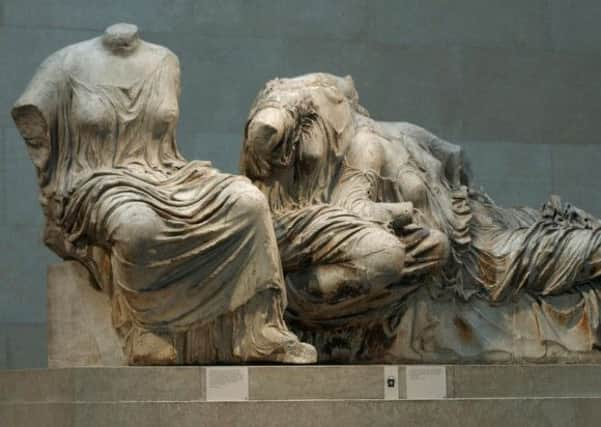Comment: A shrine to cultural imperialism


VISIT Athens and you can see at least some of the Parthenon marbles – as they should be called – the way they were meant to be seen.
A glass-walled main gallery sits on top of the modern Parthenon Museum, the dimensions and orientation perfectly mimicking its namesake overhead. The tinted windows protect the stone from the harsh Mediterranean sun, but the marble still glows under the same light as two and a half thousand years ago.
Advertisement
Hide AdAdvertisement
Hide AdYou are within sight of the Areopagus, where St Paul delivered the gospel in Europe. A short walk away is the Panathenaic Stadium where the modern Olympic ideal was born. Overlooking both is the Pnyx, where leading Athenians began the custom of the people holding power – democracy.
But something has been missing since 1801 when Thomas Bruce, the 7th Earl of Elgin, began gouging chunks of classical Greek heritage from its historical and physical context. When Elgin first saw the Parthenon, it was already a ruin, but the British Museum has carried on the tradition of being poor custodians. The marbles have been damaged through abrasive cleaning, and their arrangement in the Duveen Gallery is a cold and dismembered display.
Yet, despite many of the surviving sculptures being preserved in Athens, the argument persists that the marbles were “saved” by Elgin and must be protected by the British Museum. It is a fragment of patronising Orientalism almost as exquisite as the marbles themselves.
Museums are places where the past is preserved, but British Museum director Neil MacGregor’s comments make it impossible not to feel as if another relic is being protected.
With Britain’s global influence in retreat, the British Museum’s hoard of treasures stubbornly endures as a shrine to cultural imperialism. It insists that for a historical artefact to be fully appreciated, it needs to be displayed in a western capital.
For such a conservative establishment, sending part of its most precious collection to Russia, across the front line in a new Cold War, is a bizarre gamble.
• Paris Gourtsoyannis is a Greek journalist living in Edinburgh.